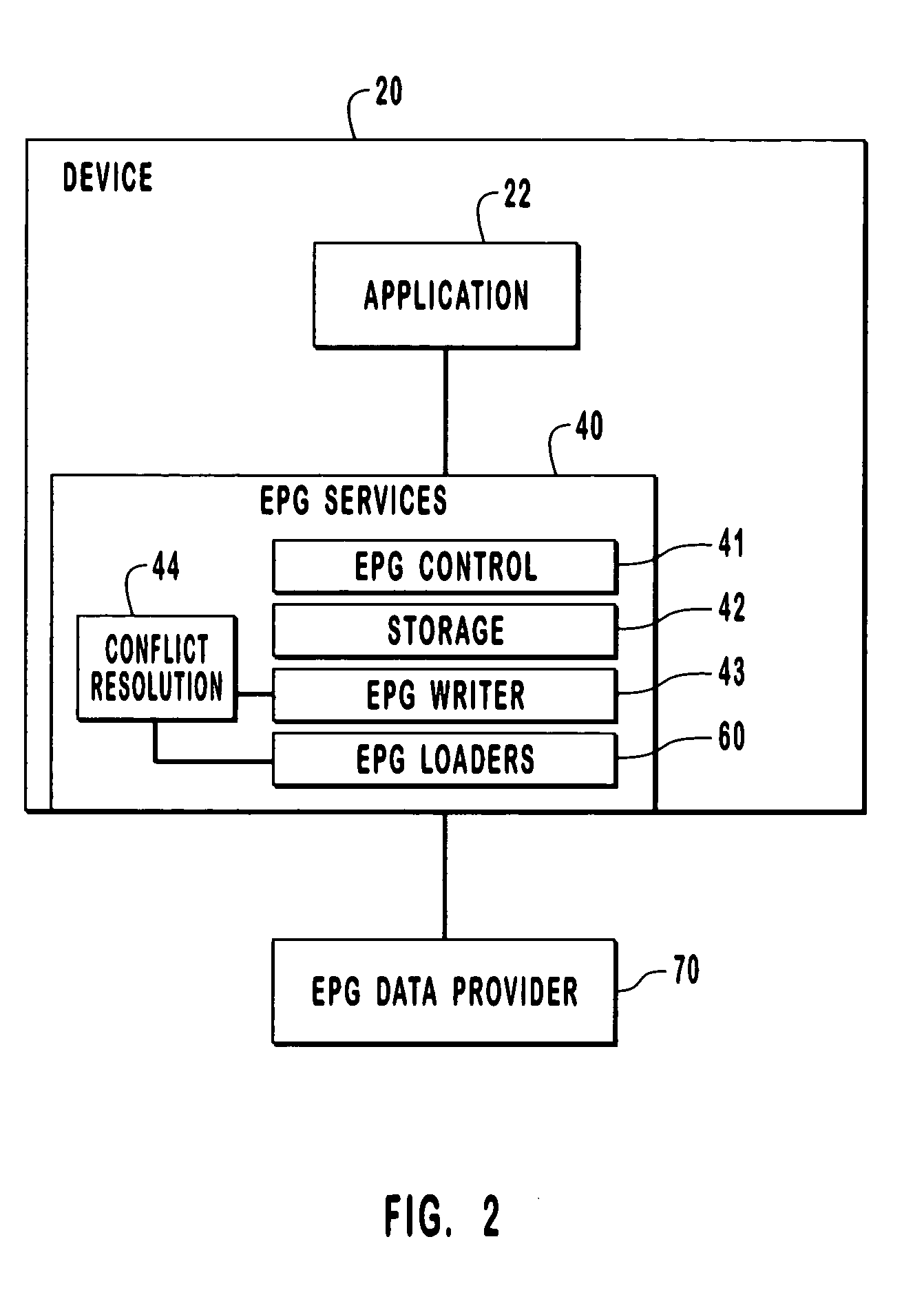Systems and methods for electronic program guide data services
a technology of electronic program guides and data services, applied in the field of electronic program guides, can solve the problems of many destination devices which receive interactive epg data having limited storage capacity, and the data received by users cannot be tailored to that user's particular tastes,
- Summary
- Abstract
- Description
- Claims
- Application Information
AI Technical Summary
Benefits of technology
Problems solved by technology
Method used
Image
Examples
Embodiment Construction
[0021] Electronic program guides (EPGs) are used to convey data to a user. Primarily, the data typically transmitted by an EPG data source is related to television programming and may include the titles of the television programs, the descriptions of the television programs, and other attributes and properties of the television programs. The EPGs are usually developed by EPG data providers that are responsible for the content of the EPG data. For instance, EPG data provided by an EPG data provider may be devoted exclusively to movie channels or EPG data can be devoted to public or free television channels. Currently, a recipient of EPG data is restricted to the format and content of a single EPG data provider.
[0022] EPGs, however, can also be used to convey other types of information such as radio schedules, Internet streaming media event schedules, information related to the Internet, or the content of the Internet. This document focuses on EPG data relating to television programm...
PUM
 Login to View More
Login to View More Abstract
Description
Claims
Application Information
 Login to View More
Login to View More - R&D
- Intellectual Property
- Life Sciences
- Materials
- Tech Scout
- Unparalleled Data Quality
- Higher Quality Content
- 60% Fewer Hallucinations
Browse by: Latest US Patents, China's latest patents, Technical Efficacy Thesaurus, Application Domain, Technology Topic, Popular Technical Reports.
© 2025 PatSnap. All rights reserved.Legal|Privacy policy|Modern Slavery Act Transparency Statement|Sitemap|About US| Contact US: help@patsnap.com



